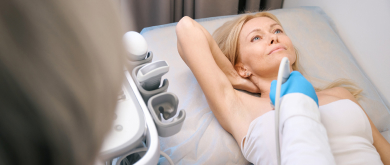Breast Augmentation
WHAT IS BREAST AUGMENTATION?
Breast Augmentation is a surgery designed to improve the size and shape of the breasts by placing breast implants. In our center, this surgery is performed under the Emma Concept®.
This philosophy emphasizes advanced tissue preservation techniques to achieve subtle and long-lasting results. This guarantees a quick post-operation recovery and ensures that each patient enjoys an aesthetically harmonious appearance.
For Breast Augmentation, we use high-quality prostheses from the Motiva Implants brand. During the assessment appointment, we take precise measurements and perform a 3D simulation to advise and recommend the most suitable implant, ensuring natural and harmonious results with each patient's body features. The surgery is performed under general anesthesia and lasts approximately 1 hour. After
surgery, a post-surgery bra is placed to facilitate proper recovery.
Benefits of Breast Augmentation under The Emma Concept®
Recovery and Post-Treatment Care:
Recovery is notably fast and designed so you can get back to your daily life without long interruptions. Most patients usually return to work in just 2 or 3 days after the procedure.
Wearing a post-surgery bra is essential for the first month after surgery.
We recommend avoiding driving for at least a week and staying out of pools, hot tubs, or baths for a month to make sure you recover well.
You can go back to your regular workouts about a month after surgery, letting you get back to being active safely and comfortably.
INFORMATIONAL VIDEOS
Discover everything about Breast Augmentation
FREQUENTLY ASKED QUESTIONS
Everything you need to know about Breast Augmentation:
galería de fotos
¿Te gustaría ver nuestros resultados?
BREAST SURGERIES






